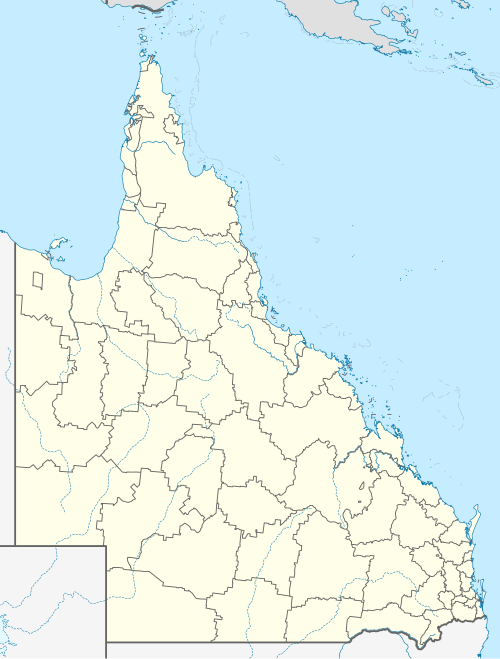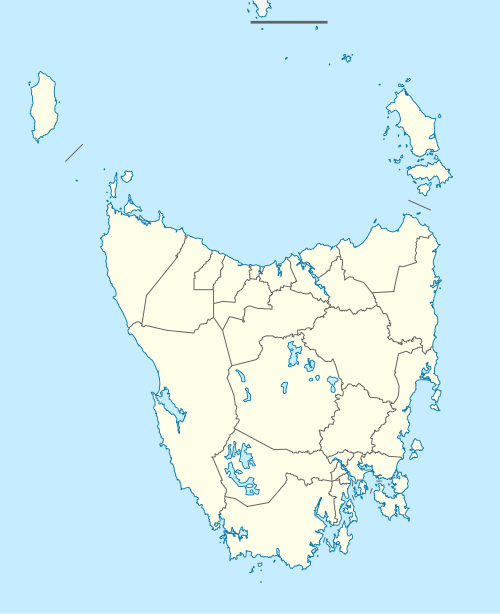2000_Summer_Olympics_torch_relay
The 2000 Summer Olympics torch relay was the transferral of the Olympic Flame to Sydney, Australia, that built up to the 2000 Summer Olympics. The torch travelled to various island nations as part of a tour of Oceania before beginning an extensive journey around Australia. For the first time the Flame was taken underwater, with a special flare-like torch taken on a dive down to the Great Barrier Reef. At the opening ceremony the cauldron was lit by Aboriginal athlete Cathy Freeman.
 | |
| Host city | Sydney, Australia |
|---|---|
| Countries visited | Greece, Guam, Palau, Micronesia, Nauru, the Solomon Islands, Papua New Guinea, Samoa, American Samoa, the Cook Islands, Tonga, New Zealand, Australia |
| Distance | 27,000 km in Australia 36,000 km total |
| Torch bearers | 800 in Greece 1,500 in Oceania and New Zealand 11,000 in Australia |
| Start date | 10 May 2000 |
| End date | 15 September 2000 |
| Torch designer | Robert Jurgens at Blue Sky |
| No. of torches | 14,000 |
A History of the Olympic Torch Relay has been written by Janet Cahill covering all relays to Sydney 2000. She is also author of the Olympic Torch Relay section of the "Official Report of the XXVII Olympiad, Sydney 2000 Olympic Games. Volume Two - Celebrating The Games".
Torch
The design of the torch reflected three famed areas of Australian culture: the boomerang, the Sydney Opera House, and the waters of the Pacific Ocean. The concept also reflected the elements of earth, fire, and water.[1][2] This was achieved across three layers of the torch. The first, inner layer contains the fuel system and combustor, the second contains the fuel canister, and the outer layer is a specially textured aluminium shell. A combination of copper, brass, aluminium, and stainless steel was used in its construction, and the fuel comprised 65 percent butane and 35 percent propane. In total, 14,000 torches were produced.[2] The distance covered by each torchbearer was 105.478 km.
Torchbearers

A total of 13,400 torch-bearers were involved in the relay. The Greek leg of the route saw 800 people carry the torch, while 1,500 people were involved across Oceania. As part of the vast traversal of Australia, 11,000 people carried the torch within the country.[3]
The first Australian torch-bearer was Sophie Gosper, the daughter of International Olympic Committee (IOC) Vice-President Kevan Gosper. Her selection caused considerable controversy with accusations of corruption directed at the Hellenic Olympic Committee (HOC). Greek-Australian Yianna Souleles was originally due to receive the torch in Olympia but was replaced at late notice by Gosper. Kevan Gosper accepted the invitation for his daughter to carry the torch while claiming to be unaware that this would make her the first Australian to have the honour.[4]
The HOC's invitation was seen as an attempt to carry favour with the IOC after being warned that its delays put the planned 2004 Olympics (scheduled to be held in Greece) in jeopardy.[5] Gosper's acceptance of the invitation was portrayed by the media as being nepotistic and inappropriate, with Australian politicians, Olympic athletes, and officials from various Olympic Committees condemning the move. Gosper initially defended his actions but would go on to make a public apology, claiming that fatherly pride had clouded his judgement. He gave up his role in the relay at the Melbourne Cricket Ground despite having previously described it as "the most important moment of my life since I won a silver medal [there]".[4]
Route
The Flame was lit during a ceremony in Olympia, as has been tradition at all the Summer Games since those in 1936. The Flame is initiated by using a parabolic mirror that concentrates the sun's rays. However, due to some cloud cover on the day of the ceremony, there was insufficient sunlight to create the required level of heat. A backup, lit on the previous day during rehearsals, was used instead. The remainder of the ceremony could then take place.[1]
The relay always begins in Greece and travels from Olympia to Athens and the Panathenaic Stadium. The Hellenic Olympic Committee arranged for the torch to be taken to several Greek islands, a first in the history of Olympic relays. The torch arrived in Athens on 20 May, after which it began a tour of Oceania. The Flame was flown firstly to Guam, before moving to Palau, Micronesia, Nauru, the Solomon Islands, Papua New Guinea, Vanuatu, Samoa, American Samoa, the Cook Islands, Tonga, and New Zealand. The relay had been scheduled to visit Fiji, but the country was omitted due to ongoing government instability at that time.[1]
After the island tour the Flame arrived in Australia on 8 June. The relay was an extensive journey around the country, involving 11,000 torch-bearers and a variety of modes of transport. On 27 June the Flame was taken underwater, a first in the history of torch relays. Marine biologist Wendy Craig Duncan carried a special version of the torch for a three-minute trip around Agincourt Reef, a section of the Great Barrier Reef popular with divers. The torch was modified to carry a specially designed flare that would burn at 2,000 degrees Celsius underwater while remaining as aesthetically similar to the normal flame as possible.[6]
Route in Greece
May 10 (day 1)
May 20 (day 2)
May 20 (day 3)
Route in Oceania (Pacific Islands)
| Date | Map |
|---|---|
|
May 22 (day 1): Hagåtña, Guam |
Route in New Zealand
| Date | Map |
|---|---|
|
June 5 (day 12): Queenstown |
Route in Australia
| Date | Map |
|---|---|
|
June 8 (day 1): Uluṟu-Kata Tjuṯa National Park |
|
|
June 9 (day 2): Mount Isa |
|
|
June 28 (day 21): Katherine |
|
|
June 30 (day 23): Kununurra Airport |
|
| July 11 (day 34): Journey aboard the Indian Pacific | |
|
July 12 (day 35): Port Lincoln |
|
|
July 19 (day 42): Hamilton |
|
| July 31 (day 54): Journey aboard the Spirit of Tasmania | |
|
August 1 (day 55): Burnie |
|
| August 5 (day 59): Journey aboard the Spirit of Tasmania | |
|
August 7 (day 61): Berwick |
|
|
August 14 (day 68): Albury |
|
|
September 5 (day 90): Canberra |
|
|
September 7 (day 92): Cooma |
|
|
September 11 (day 96): Cronulla |
|
Lighting of the cauldron

The Australian middle distance gold-medallist Herb Elliott carried the torch into Stadium Australia and passed it on to the final runners. The final succession of torch-bearers were selected to celebrate the 100 year anniversary of female participation in the Olympic Games[7] (women were not allowed to compete at the inaugural 1896 Summer Olympics but were given the opportunity in 1900).[8] Betty Cuthbert, Raelene Boyle, Dawn Fraser, Shirley Strickland, Shane Gould, and Debbie Flintoff-King, all medallists in previous Games, were given the honour of carrying the Flame before passing it to the final torch-bearer.[7]
The cauldron was lit by Aboriginal athlete Cathy Freeman, a decision that was at the time reported as being a "bold political and social statement".[7] Freeman was the first competing athlete to light the Olympic cauldron.[9][10] Two elements from the torch concept, fire and water, were replicated in the design of the cauldron. Freeman stood atop a pool of water and lit a flame that surrounded her. Though a computer glitch delayed proceedings for a few minutes the Flame then lifted around Freeman.[11][12]
The ten-year anniversary of the Games was celebrated in a special ceremony in 2010. Cathy Freeman and Paralympic champion Louise Sauvage (who was the final torchbearer at the Paralympic Games) lit the cauldron during an event attended by numerous athletes and school students.[13] The twenty-year anniversary of the Games was celebrated in a special ceremony in 2020. The cauldron was re-lit by two up-and-coming athletes; Indigenous basketballer Tenayah Logan and teenage Paralympian Tamsin Colley. It was attended by Ian Thorpe, Louise Sauvage and local Sydneysiders who were volunteers during the games. Freeman sent a video message.[14]
- Notes
- "Official Report of the XXVII Olympiad, Sydney 2000 Olympic Games. Volume Two - Celebrating The Games" (PDF). Sydney Organising Committee for the Olympic Games. pp. 25–49. Archived from the original (PDF) on 27 March 2009. Retrieved 7 August 2012.
- Sisk, Beth (18 January 2001). "Carrying a Torch for Engineering". National Engineers Week Foundation. Archived from the original on 7 July 2011. Retrieved 7 August 2012.
- "Factsheet: The Olympic Torch Relay" (PDF). International Olympic Committee. October 2011. Retrieved 7 August 2012.
- "'Shame and Scandal in the Family': Australian Media Narratives of the IOC/SOCOG" (PDF). Retrieved 8 August 2012.
- "Olympic torch sparks controversy". BBC News. 10 May 2000. Retrieved 7 August 2012.
- "Olympic flame goes underwater". BBC News. 27 June 2000. Retrieved 8 August 2012.
- "Cathy Freeman Lights Flame At Olympic Games Opening Ceremony". Australian Politics. 15 September 2000. Retrieved 7 August 2012.
- "7 April 1896: Let the modern Games begin". The Guardian. 18 May 2011. Retrieved 7 August 2012.
- "Cathy Freeman lights up Australia". ESPN. 24 May 2012. Retrieved 7 August 2012.
- "Catherine Freeman". JCCM UK Ltd. Archived from the original on 2012-06-20. Retrieved 7 August 2012.
- "Opening ceremony: Beautiful Sydney". BBC News. 8 August 2008. Retrieved 7 August 2012.
- Martella, Paul. "Opening Ceremony blunders". Yahoo!. Retrieved 7 August 2012.
- "10 years on, Olympic flame burns bright". ABC. 15 September 2010. Retrieved 7 August 2012.
- Barrett, Chris (15 September 2020). "'Great to know it still works': Olympic cauldron lit again after 20 years". Sydney Morning Herald. Retrieved 23 October 2020.
- Bibliography
- Cahill, J. (1999) Running Towards Sydney 2000; A History of the Olympic Torch Relay, Walla Walla Press, Sydney
- Entry for the Olympic Cauldron at Sydney Olympic Park at the Australian Office of Environment & Heritage










